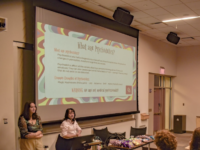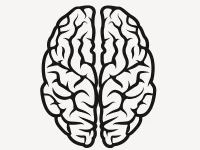Sometime around 2500 BCE, the earliest recorded dream in history was documented. This was Sumerian king Dumuzi’s dream, from the ancient civilization of Mesopotamia, and was recorded in cuneiform. In this vision, the king sees subjects moving before him with various objects in their hands and on their heads, which was a perplexing story to the public. Dreaming has served as a 4,000-year confusion to humanity — if dreaming has been a collective human experience dating back thousands of years, how do we continue to encounter the same phenomena as our ancestors? Though there is no definitive answer for these sensory experiences while we sleep, yet scientists in the neuroscience field have theorized why we dream, using psychology and evolutionary science as explanations.
For years, popular theories to explain dreams have included physiological theories that the brain stores information from waking experiences with dreams, conditioning theories that dreams allow the preservation of specific areas in the brain, Freud’s wish-fulfillment idea that we dream to express subconscious longings, and many more. Recently, there has been a rise in another dream theory, known as the threat simulation theory (TST).
In 2000, Finnish Neuroscientist Antti Revonsuo proposed the threat simulation theory, suggesting that the brain has evolved with the biological function to dream to simulate threatening events, allowing the dreamer to rehearse threat perception and threat avoidance in a safe environment. Dreaming is correlated with a stage of sleep known as Rapid Eye Movement (REM) that evolved around 140 million years ago. Revonsuo suggested TST as an explanation for the content of dreams and nightmares by contextualizing human dreaming with its ancestral origins in early humans: individuals with improved threat avoidance skills had a selective advantage with a higher probability of successful reproduction, resulting in the neural basis of dream production persisting in successive populations. As a result, the brain produces dreams riddled with threatening events to simulate real-life dangers as an evolutionary survival mechanism.
“As a result, the brain produces dreams riddled with threatening events to simulate real-life dangers as an evolutionary survival mechanism.”
Revonsuo’s theory was applied to current human populations, hypothesizing that the brain continues to rehearse common threats in the same environment. TST is supported by evidence of dreams in children exposed to traumatic experiences where post-traumatic dreams evolved as a threat simulation response. A 2003 study observed a correlation between threatening dreams in a trauma group and a control group. Scientists found that traumatized children who experienced the effects of military violence, or the presence of ecologically valid threat cues in their environment, had a higher frequency of dreaming threatening events during REM sleep than less traumatized or non-traumatized children. By observing nightmares and dreams as an evolutionary adaptation illustrated by post-traumatic dreams in children, Revonsuo’s threat simulation theory remains a plausible explanation for human dreams.
Robust proof of why the brain can conjure vivid sensory experiences and evoke intense emotions while we are asleep remains an enigma in the field of neuroscience. Whether the brain has evolved to dream to preserve a combination of multiple biological functions and adaptations remains unknown. Nonetheless, overwhelming biological evidence and study of Darwin’s evolution support that dreaming could have several survival benefits that likely evolved in an early human ancestor.






